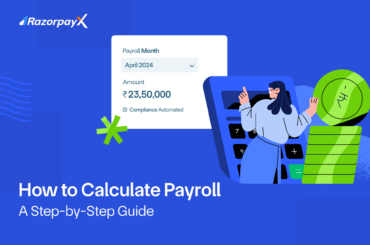What is Human Resource Planning?
Human Resource Planning is the process of planning and managing an organisation’s talent needs. Employees are the most valuable asset of any business – the quality of talent determines the productivity and profitability of the organization.
HRP ensures that the business avoids manpower shortages or surpluses while maintaining the quality of employees being hired. This is why investing and understadning HR planning is very important for any business.
Importance of Human Resource Planning
Human Resource Planning helps businesses proactively plan for their future workforce needs. Businesses need to invest time and resources into HR planning and strategy to always have a steady supply of skilled labour.
A good HR plan should be flexible enough to accommodate unpredictable crises that may arise, like a labour shortage or changing economic conditions. It ensures constant productivity, keeps employee morale and motivation up and helps the business cope with change.
It should provide for the skill set the company requires and keep budgetary constraints in mind. It should also account for employees falling sick, promotions, resignations, retirements, maternity or paternity leaves, etc.
Human resource planning comes with a set of unique challenges, and forecasting future needs becomes inherently complex. Unlike machines or computers, people have motivations, aspirations, and life situations that can cause unexpected shifts in their career paths.
Here’s how to make a solid human resource plan despite these challenges.
Read more: HR Automation
Process of Human Resource Planning
Step 1: Assessing organizational goals
Any policy or decision should be closely tied to the organizational goals, whether profitability, disruption or market share. Individual department-wise goals should also be closely tied to this overall organizational objective. The quality and quantity of labour needed also varies across departments and teams; some departments might need to expand, while others might need downsizing.
Step 2: Analyse the business environment
The next step is to analyse the environment in which the business operates.
External factors like economic turmoil, competition and worldwide pandemics and internal factors like strategy changes and the introduction of new technology should be analysed to identify any threats or opportunities that may arise.
Step 3: Predicting demand for labour
Predicting labour demands is a complex task, requiring a variety of tools and methods. Leveraging data is key. HR professionals who use robust payroll and employee management software with powerful data analysis capabilities can make data-driven predictions on how much and what kind of talent the business needs for smooth running.
Step 4: Measure current situation
Once we have insight into the environment and the business requirements, we can now measure the current readiness of the business’s workforce. Various tests like skill gap analysis, workforce capacity, and succession planning can help measure the delta between what the business has and what the business needs.
Step 5: Cover the gaps
By cross-analyzing the labour demand and supply forecast reports, the HR department can then work on a workforce management plan to cover the gaps. The business environment is an important variable that must be considered when making this plan.
The plan should outline strategies to address identified skill gaps. This could involve internal training programs, upskilling initiatives, or targeted recruitment efforts to find talent with the necessary expertise.
Techniques like flexible work arrangements, workload adjustments, or temporary staffing solutions can be implemented to optimize the current workforce and address short-term fluctuations in demand.
The plan should incorporate contingencies for various emergency scenarios, such as economic downturns, natural disasters, or public health crises. This might involve cross-training employees for different roles, implementing remote work policies, or establishing partnerships with staffing agencies for quick access to temporary workers.
Read more: Recruitment Process
Step 6: Implementation and evaluation
The final step is implementing the plan and measuring and evaluating the performance. The most important step is creating actionable steps out of the plan outlined above. Equally important is to measure this plan’s effectiveness and adjust accordingly.
Tools and Tips Used in HR Planning
HR professionals use a number of tools and tricks when creating a human resource plan. Here’s a quick rundown of them:
Business Environment Analysis
These tools and tests are used by HR professionals to analyse the business environment that the business operates in.
Government data and economic indicators: The external environment consists of factors which affect both the business and each individual employee. By keeping track of metrics like inflation, employment rate and other economic metrics, HR professionals can make data-driven, relevant decision. Data on these external factors is publicly available on various portals: the Indian Government Data Portal, the Ministry of Statistics Portal, etc.
Some quick links:
- Reports on unemployment among different cohorts across genders, ages, location, etc.
- Key Unemployment Indicators, 2023
- Periodic Labour Force Survey Reports
- Data on Inflation
Industry reports & market research: Another invaluable source of information comes from reports and research conducted by private agencies like Nielsen and Gartner. Other agencies like McKinsey & Co and Deloitte regularly release industry level reports. Popular website Market Research also provides important insight into the condition of the market.
Labour Requirement Analysis
Several methods help assess the workforce needed for a project or ongoing operations:
-
Work Breakdown Structure (WBS): This project management tool breaks down a project into smaller, more manageable tasks. By estimating the time and effort required for each task, you can estimate the total labour needed.
-
Time and Motion Studies: This technique analyzes the time an individual worker takes to complete specific tasks. By analyzing these movements, companies can optimize workflow and determine the appropriate staffing levels.
-
Industry Benchmarks: Researching how similar companies staff their operations provides a baseline for your own labour needs. This can be adjusted based on your specific project or production volume.
-
Experience-Based Estimates: Experienced managers and project leads can leverage their past experience to estimate the labour required for similar projects.
-
Scenario Planning: Scenario planning can also be used to forecast labor needs under different future conditions, such as increased production demands or technological advancements. This helps ensure the workforce can adapt to changing circumstances.
Current Labour Condition
There are several methods HR professionals use to understand the current condition of the workforce:
1. Surveys and Focus Groups: Conducting employee surveys and focus groups gathers direct feedback on employee engagement, satisfaction, skills gaps, and overall well-being. This provides valuable insights into employee morale and areas for improvement.
2. Performance Reviews and Feedback: Regular performance reviews and feedback sessions allow managers to assess individual and team performance. This can identify areas where employees excel or need support, providing insights into the overall skillset and development needs of the workforce.
4. Employee Engagement Metrics: Tracking metrics like absenteeism, turnover rates, and employee Net Promoter Score (eNPS) provides insights into employee engagement and overall workforce satisfaction.
5. Exit Interviews: Conducting exit interviews with departing employees helps understand their reasons for leaving. This can reveal potential issues with company culture, workload, or compensation that might be impacting employee morale or retention.
Here are some cool tools and features on RazorpayX Payroll that makes HR planning easier for HR executives.
- Digital employee database with every bit of information readily available
- Employee-friendly portal for easy access to payslips, documents, etc
- Automated salary disbursal and tax calculations, for error-free payroll (and happy employees!)
- 45+ integrations with top HRMS tools and software like Jupiter, Plum, Slack etc.





